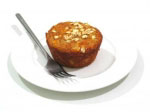
Most people eat almost twice as much fat as the human body is designed to handle. 36% to 41% of total daily calories often come from fat.
Here is a simple breakdown.
Carbohydrates should be 60% of your daily diet
- Carbohydrates are the body’s main source of energy. You must consume enough carbohydrates daily to remain healthy. Restricting your calories with low-carbohydrate diets decreases your energy.
Types of Carbohydrates
Simple carbohydrates like (sugars, including glucose and fructose from fruit and vegetables, lactose from milk, and sucrose from cane or beet sugar)
Complex carbohydrates like (carrots, broccoli, corn, potatoes, bread, cereal, pasta, rice, and beans) which contain glucose, fiber, and other nutrients.
Fat should be 30% of your daily diet
- Fat adds flavor to food, and is an important component of a healthy diet. Fat is necessary for energy production, transporting fat soluble vitamins, protection of internal organs, insulation, healthy skin, hair, and supplying the linoleic acid[1].
Types of fat
1. Triglycerides are the chemical form in which most fat exists in food as well as in the body. They're also present in blood plasma and, in association with cholesterol, form the plasma lipids.
2. Saturated fats come primarily from animal sources:
EXAMPLES
Butter, whole milk, dairy products, and meats.
Coconut and palm oils are also high in saturated fat. Saturated fat raises cholesterol[2] levels more than any element in your diet. Less than 10% of your daily calories should come from saturated fat sources.
3. Unsaturated fats can be either monounsaturated or polyunsaturated.
Monounsaturated fats. This type of fat can reduce LDL cholesterol without affecting beneficial HDL’s. This is the preferred form of fat in a diet.
Examples include olive oil, canola oil, peanut oil, and avocado oil.
Polyunsaturated Fats are divided into omega-6 vegetable oils and omega-3 fish oils.
Examples include sunflower, corn, and sesame. The omega-3 oils come from fish like mackerel, halibut, salmon, albacore tuna, and whitefish.
Benefits of Omega-3 oils are decreased blood pressure, cholesterol, triglycerides, and blood clotting.
THE PROBLEM:
Most people eat almost twice as much fat as the human body is designed to handle. 36% to 41% of total daily calories often come from fat.
Protein should be 10% of your daily diet
Protein builds and repairs muscle, red blood cells, hair, and other tissues. Protein is also necessary for the synthesizing hormones.
- Examples from plants include: Fruits, grains, and vegetables.
- Examples from legumes include: Dried beans or tofu with rice or bread.
- Meat is a good source of protein, but too much may lead to high cholesterol.
Here are some less fatty cuts of meat
Beef…………….Top round, eye of round, round steak, rump roast, sirloin tip, short lion, strip steak lean, lean and extra lean ground beef.
Pork……………Tenderloin, sirloin roast or chop, center cut loin chops
Lamb………… Foreshank, leg roast, leg chop, loin chop

